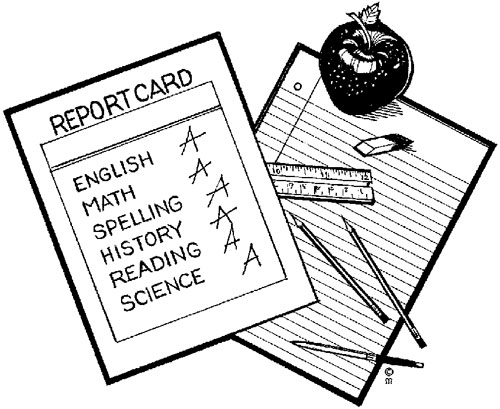.jpg)
As I finish up the last of my report cards, I can’t help but thinking about the value of grades. Do the letters on the spreadsheet really tell the story? How can one or two characters explain growth, struggle, apathy, or determination? The classic grading system seems to assume that the answer to this question in the affirmative. We give numbers for test grades and letters on report cards. Although we have a section to elaborate on each student’s performance, everybody knows that it is the number or letter that we use to define success. This system is imperfect, and may be contradictory to what true learning is.
Learning, like intelligence, has many different facets and definitions. One person’s picture of a genius might be Albert Einstein, the man who understood the laws of the universe like few others. Someone else’s paradigm might be Steve Jobs, master visionary. The list might also include Maimonides, Bob Dylan, Oprah Winfrey, the Rogachover Gaon, or Pablo Picasso.
Applying it to education, one can take many angles to define the goal of education. Life skills, universal knowledge, philosophical inquiry, problem solving, reading, writing, and other goals are all part of how we define “education.” Each has merits and each are represented in some way in almost every educational setting. But which talents are represented most in classic testing practice?
It seems that memory is the branch of intelligence most represented by current testing. Tests are generally culminations of large portions of material, with the majority of questions asking for students to recall content. To be fair, these questions often require more than rote memorization. To explain how two Talmudic sources contradict one another or how a quote from a story represents a certain character’s mindset requires a deeper understanding of the material and the ability to put those ideas into words. However, these ideas are usually taught or discussed in class first, and therefore don’t show any degree of innovation.
Which brings us back to the definition of learning. If somebody can recall information, especially while explaining the underlying theory, evidence of learning has been presented. However, is this really the ultimate goal for learning? Focus should be placed on what the students can do with the content than on the content itself. In life, success is not about what you know, but what you can accomplish with what you know (exception: Jeopardy). It doesn’t seem that our grades always reflect that.
Then, we have to discuss the purpose of grading. Hopefully, most teachers’ educational goals aren’t limited to helping high schools and colleges decide who to accept. However, the classic grading process is often no more than that; it simply describes and defines a student based on their past performance.
The evaluation process has the opportunity to be so much more for our students. The key word is “feedback.” Grading should be an opportunity for teachers to understand the areas in which each student is succeeding or struggling. Teachers could then communicate this information to each student while developing targeted interventions or enrichment to their students’ needs. This way, grading becomes a useful tool to understand where students are at, and what can be done to help them improve.
To reach this goal, a monumental shift in two ways is required. First, educators need to create more short-term assessments. The more frequent the assessments, the greater the opportunity to learn about the students, and to intervene in their best interests. Secondly, the assessments must be skill-focused. Teachers can only provide constructive feedback if they are assessing areas that can be remediated. Telling a student “you knew this, but you didn’t know that” is simply an assessment of memory and understanding, but nothing more.
As a teacher, thinking about making such a shift makes me nervous. It requires a complete change in educational approach, and a lot of added work. My personal approach is to try to incorporate some of this into my teaching practices, which is more easily accomplished in smaller classes. To make a move in a different direction organizational and cultural change is needed. This would require focused leadership.
The potential benefit here is tremendous. Consistent skill-assessment and feedback can help our students grow in ways they haven’t previously. The stronger students can be enriched and the weaker students assisted. We shouldn’t be waiting weeks until a test to find out where student are holding, only to immediately move on to the next unit. Education should be a partnership between teacher and student, and this is one way such a union could be achieved. Finally, we might be able to move past reducing our students’ achievements to letters and numbers and view them within the greater picture.
Yair Daar teaches Gemara and Tanach, and serves as a curriculum coordinator at SAR High School in Riverdale, New York. He is currently a doctoral candidate at Yeshiva University’s Azrieli Graduate School. Yair lives in Bergenfield with his wife and three daughters. Comments can be left at chinuchadventures.blogspot.com
by: Yair Daar









